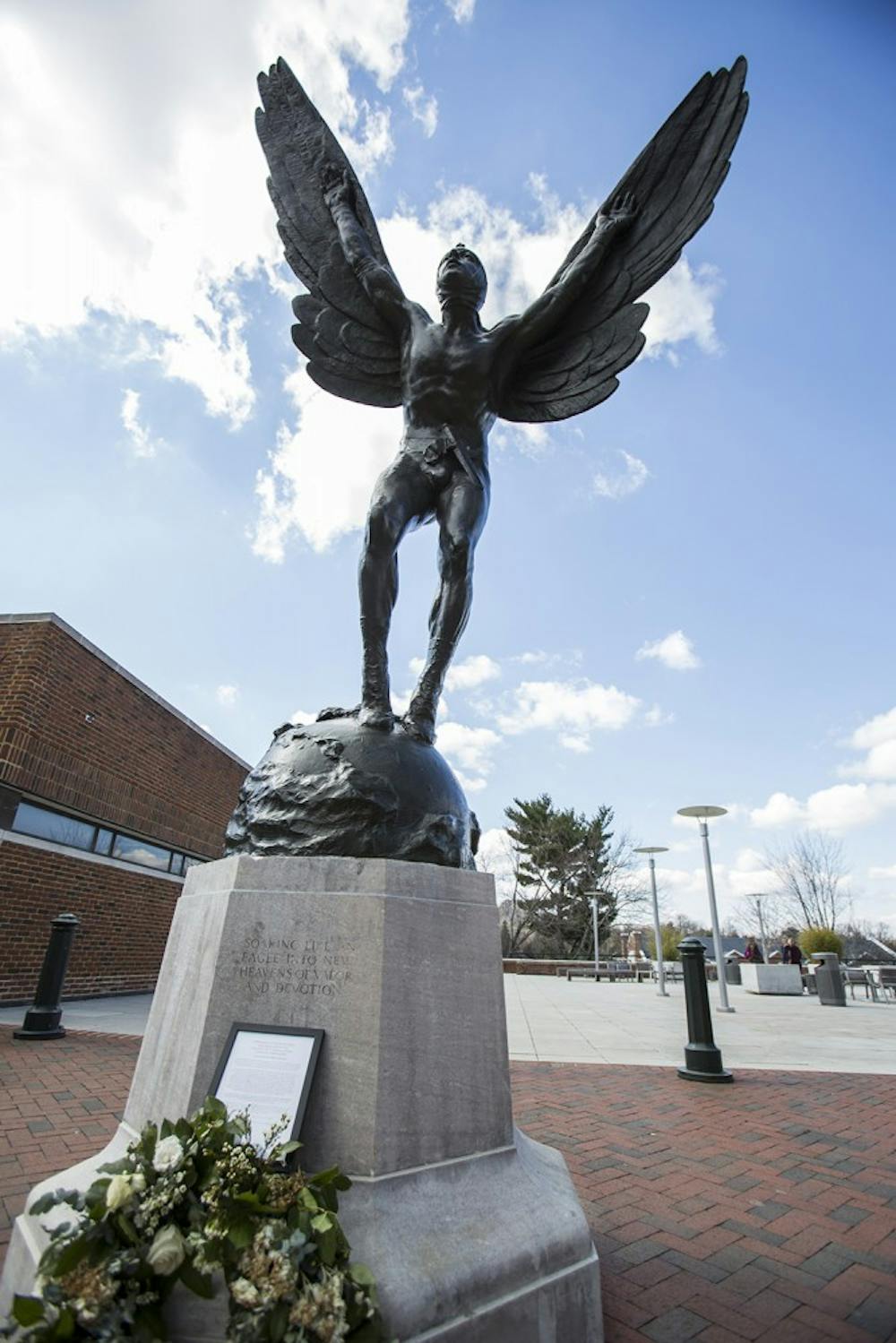Members of the community and University administration met March 16 for a ceremony honoring the 100th anniversary of the death of former University student James Rogers McConnell. McConnell, who spent two years in the College of Arts and Sciences and one year in the Law School, died in combat as a pilot for France during World War I.
McConnell, who originally matriculated to the University in 1907, was the first of 64 men affiliated with the University to die in WWI. McConnell also has the distinction of being the last American to die for the French during WWI before the U.S. officially entered the war.
McConnell originally joined the war effort by becoming a member of the American Ambulance Corp in France, but later decided to join the American Lafayette Escadrille — later renamed to the Lafayette Escadrille — as one the original seven pilots.
McConnell’s service on the French battlefields came to an end March 19, 1917. While on patrol, he engaged in aerial combat with several German pilots and was separated from his fellow pilots, was shot several times by enemy machine guns and is believed to have died before his plane even hit the ground.
A note written by McConnell was found on him after his death which indicated that he did not fully expect to survive the war.
“My burial is of no import,” the note read. “Good luck to the rest of you. God damn Germany and Vive la France."
After his death, several University alumni and friends of McConnell commissioned Gutzon Borglum, the sculptor most famously known for Mount Rushmore, to create a statue honoring McConnell’s life. That statue called “The Aviator” still stands on Grounds today between Alderman and Clemons libraries.
Former University President Edwin Alderman also sent a letter regarding the statue and McConnell’s contribution to McConnell’s father on March 28, 1917.
“In my judgement, there ought to be placed upon our Grounds, or upon our walls, some really beautiful and noble memorial to James McConnell. It ought to be of such beauty and dignity as to have a spiritual and patriotic appeal to the future generations of our youth,” Alderman said. “He has written his name high upon the rolls of those who have illustrated by valor and courage the spirit of this University and the loftier qualities of American citizenship.”
While at the University, McConnell was a very involved student. In addition to being a member of the Hot Feet Society — a precursor to the IMP Society — a brother of Beta Theta Pi and an editor of Corks and Curls, McConnell was also the president and a founding member of the Aero Club.
Chase Ciotti, a third-year Commerce student and president of the Omicron chapter of Beta Theta Pi, said McConnell is still a large part of their chapter’s history.
“It’s an inspiring way to see that even somebody who was once in your position can make a contribution,” Ciotti said.
Ciotti said McConnell’s dedication to service has had a lasting impact on the chapter.
“I think the really big thing [about McConnell’s story] is the selflessness and the commitment to service,” Ciotti said. “Just to have people put their ego in check and see that they can contribute in a lot of different ways to a cause that’s important to them. That selflessness is an important thing to keep in mind.”
In addition to the ceremony, the University is honoring McConnell with an exhibition at the Small Special Collections Library. The exhibition, open to the public through May 21, includes several of McConnell’s letters and other artifacts from WWI.
“I have met a lot of current U.Va. students who are driven by a dedication to service, and I hope they see themselves in McConnell, and feel inspired by his example to follow that path,” Molly Schwartzburg, curator of the Small Special Collections Library, said in an email to The Cavalier Daily.
Schwartzburg said curating the exhibition was a moving experience for her and she hopes it has the same effect on others as well.
“He truly believed in the rightness of the French cause, in his own duty to assist, and in the honor of dying for what he believed in,” Schwartzburg said. “But this was not naïve or simply idealistic. He knew what war was after a year clearing bodies from the trenches, under fire, at great risk.”







